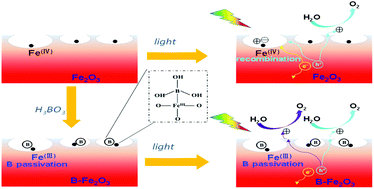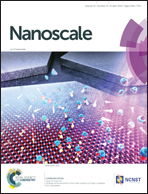Boron-passivated surface Fe(iv) defects in hematite for highly efficient water oxidation†
Abstract
Hematite is a good photocatalyst for solar water oxidation but its performance is highly limited by the strong electron–hole recombination. Surface defects as recombination centers were considered as one of the most important factors in determining the efficiency of hematite. However, the defects have never been clearly identified, which strongly limits the targeted modification. Here we report the identification of surface Fe(IV) defects in hematite by using synchrotron radiation based X-ray absorption spectroscopy. Moreover, the Fe(IV) defects can be effectively passivated by facile surface engineering with boron-termination, which can suppress the surface recombination and then significantly improve the performance. The B-passivated hematite thus shows a large cathodic shift (up to 100 mV) of the onset potential when compared to the pristine sample, and can be effectively coupled with Ti-treatment and Co–Pi co-catalyst to finally achieve a high photocurrent of 2.61 mA cm−2 at 1.23 V vs. RHE. The results may open up a new way by targeted surface engineering to effectively passivate the defects in hematite.



 Please wait while we load your content...
Please wait while we load your content...